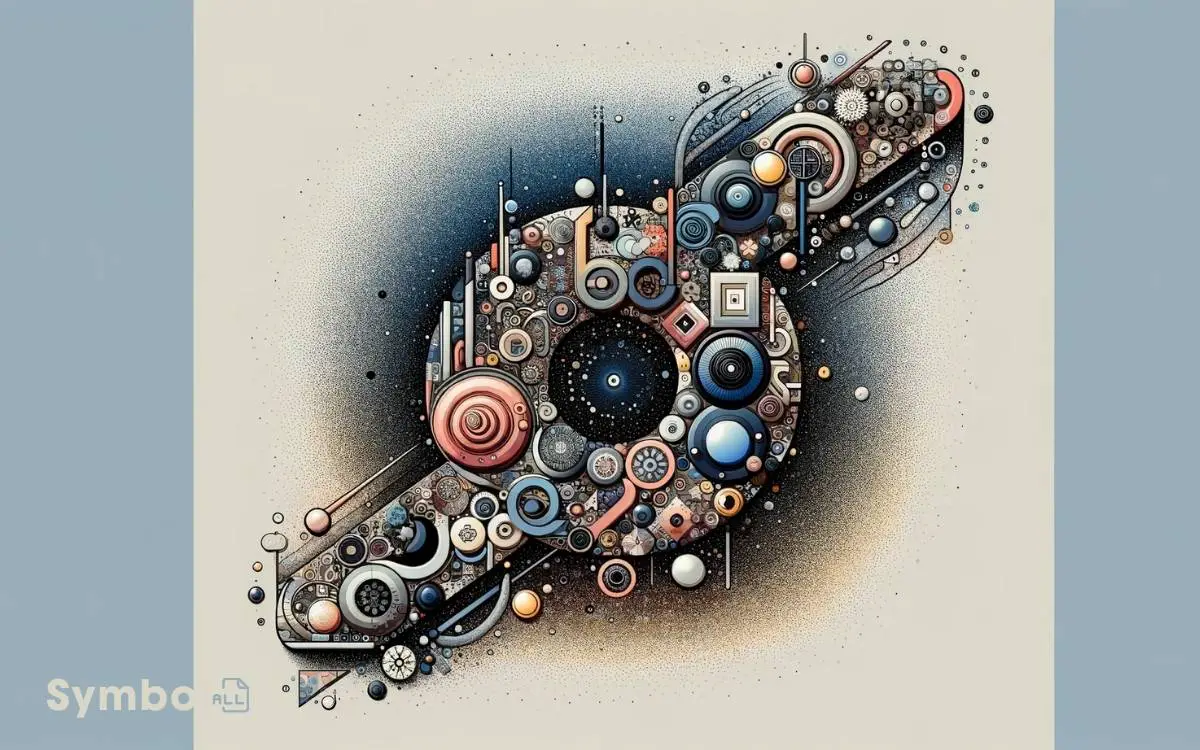Symbolic Used in a Sentence: Walking Through a Storm!
When you use symbolic in a sentence, you’re adding layers of meaning that go beyond the literal. For example, describing a journey as “walking through a storm” can illuminate personal struggles and growth, rather than simply moving in bad weather.
By carefully choosing symbols related to your theme, such as storms for conflict or colors to evoke emotions, you elevate your writing. Each symbol, rooted in its context, offers unique insights and enriches your narrative.
Remember, the effectiveness of a symbol hinges on its integration and the clarity it brings to your theme. As you master symbolism, you’ll discover how it reveals the human condition, making your sentences not just read, but felt and pondered upon.

Key Takeaways
Understanding Symbolism
Symbolism often serves as a potent tool in literature, enabling writers to convey deeper meanings and themes through the use of symbols that represent ideas or concepts beyond their literal sense.
You’ll find that understanding symbolism is vital for delving beneath the surface of a story.
It’s about recognizing the layers and nuances that symbols add, enriching the narrative and offering insights into the human condition.
Whether it’s an object, a character, a color, or even a setting, symbols can encapsulate complex ideas, emotions, and ideologies within a narrative framework.
Types of Symbols in Literature
In literature, symbols can manifest as tangible objects, characters, or settings that convey complex ideas and emotions, delving beyond their superficial meanings to enhance narrative depth and reader understanding.
These symbols are used meticulously to reflect broader concepts or themes.
For instance, a storm mightn’t just be a storm; it could symbolize chaos, change, or a character’s internal struggle.
Similarly, a journey could represent the quest for knowledge, self-discovery, or an escape from reality. Colors also play a significant role, where red might denote passion, danger, or love, depending on the context.
Through these symbols, authors invite you to look deeper into their work, uncovering layers of meaning that offer a richer, more engaging reading experience.
Crafting Sentences With Symbols
How can you effectively incorporate symbols into your sentences to deepen the narrative’s impact?
First, understand that symbols can elevate your writing by adding layers of meaning.
To do this, consider these steps:
- Identify the core theme of your narrative.
- Select symbols that resonate with this theme.
- Integrate these symbols seamlessly within your sentences.
- Revisit and refine the usage to guarantee clarity and impact.
The Role of Context
Understanding the context in which symbols are used can greatly enhance their meaning and effectiveness in your narrative. The context frames symbols, giving them a unique resonance that might not exist in isolation.
For instance, a rose might symbolize love in one context but could represent secrecy in another, depending on the narrative backdrop.
| Symbol | Contextual Meaning |
|---|---|
| Rose | Love |
| Rose | Secrecy |
| Dove | Peace |
| Dove | Innocence |
| Chain | Bondage |
| Chain | Connection |
Symbolism Vs. Metaphor
Differentiating between symbolism and metaphor is vital as you delve further into literary analysis, since both serve different functions in enriching a text.
While they may seem similar, it’s important to understand their distinct characteristics:
- Symbolism often involves objects, characters, or colors representing broader concepts or ideas.
- Metaphor directly compares two unrelated things, suggesting a likeness or analogy between them without using ‘like’ or ‘as.’
- Symbolism tends to be more subtle and layered, requiring interpretation within a broader narrative or thematic context.
- In contrast, metaphors are more direct, aiming to illuminate or clarify by drawing a specific parallel.
Grasping these differences enhances your analytical skills, allowing you to appreciate the depth and nuance in literary works more profoundly.
Examples From Classic Texts
Having explored the distinctions between symbolism and metaphor, let’s examine their application in classic texts, where these literary devices explore life into narratives.
Consider F. Scott Fitzgerald’s ‘The Great Gatsby,’ where the green light symbolizes Gatsby’s unattainable dreams and desires, offering depth to his pursuit.
In ‘Moby Dick’ by Herman Melville, the white whale represents the ultimate challenge, embodying nature’s unpredictability and man’s obsession.
These examples showcase how symbolism enriches storytelling, allowing readers to investigate deeper into characters’ motivations and themes.
Through careful placement, authors like Fitzgerald and Melville weave complex ideas into the fabric of their narratives, engaging you in a more profound exploration of human experience and societal critique, far beyond the literal happenings in the plot.
Symbolism in Poetry
Symbolism serves as a cornerstone in poetry, allowing poets to convey complex emotions and themes through powerful imagery and concise language.
You’ll find that through the strategic use of symbols, poets can layer meanings, enriching the reader’s experience in ways that straightforward language often can’t achieve.
This technique empowers you to dive deeper into the text, uncovering hidden connections and interpretations that may not be immediately apparent.
Consider the following aspects of symbolism in poetry:
- Metaphor and Simile: Linking unrelated concepts to evoke a vivid image or emotion.
- Cultural Symbols: Utilizing commonly understood symbols to tap into collective experiences.
- Nature Imagery: Employing elements of nature to symbolize emotions or states of being.
- Colors and Objects: Using colors and objects as symbols to represent ideas or themes.
Enhancing Emotional Impact
Understanding the layers of symbolism in poetry prepares you to appreciate how these elements greatly enhance the emotional impact of a poem. Symbolism serves as a bridge between the abstract and the concrete, allowing readers to explore deeper feelings and experiences indirectly.
It’s not just about what’s on the surface; it’s about what lies beneath, waiting to be discovered and felt.
| Symbol | Emotional Impact |
|---|---|
| Storm | Turmoil, conflict |
| Rose | Love, beauty |
| Winter | Coldness, end |
Through symbols like the storm, rose, and winter, poets communicate complex emotions and ideas succinctly.
These symbols carry with them a wealth of cultural and personal associations that, when unpacked, reveal the poem’s true emotional depth, making the experience of reading both richer and more profound.
Practice Exercises
Let’s immerse ourselves in some exercises to sharpen your ability to identify and interpret symbolism in poetry, enhancing your reading experience.
Symbolism enriches a poem’s emotional depth, offering layers of meaning that provoke thought and emotional response.
To master this, you’ll need to:
- Identify symbols within the text and note their recurrent appearance.
- Analyze the context in which these symbols appear to grasp their significance.
- Reflect on how the symbols align or contrast with the poem’s overall theme.
- Consider the emotional or philosophical impact these symbols impart on the reader.
Conclusion
To wrap up, you’ve seen how symbolism weaves depth into narratives, transforming mere words into vivid landscapes of meaning.
Whether it’s the subtle hint of a character’s journey through the imagery of a road or the complex layers uncovered in poetry, symbols enrich stories, offering a multifaceted experience.
By analyzing classic examples and practicing the craft, you’re equipped to discern and utilize symbols, enhancing the emotional resonance and depth of your own writing. Remember, in the domain of literature, symbols are your allies, not adversaries. By weaving symbols into your narrative, you invite readers to engage on a more profound and interpretative level, uncovering layers of meaning that transcend the surface. This technique mirrors the symbolic interaction approach in sports, where actions and objects on the field often carry significance beyond their immediate function, representing values, struggles, or shared human experiences. Similarly, in writing, thoughtful symbolism can transform a simple moment into a powerful commentary on the complexities of life.






